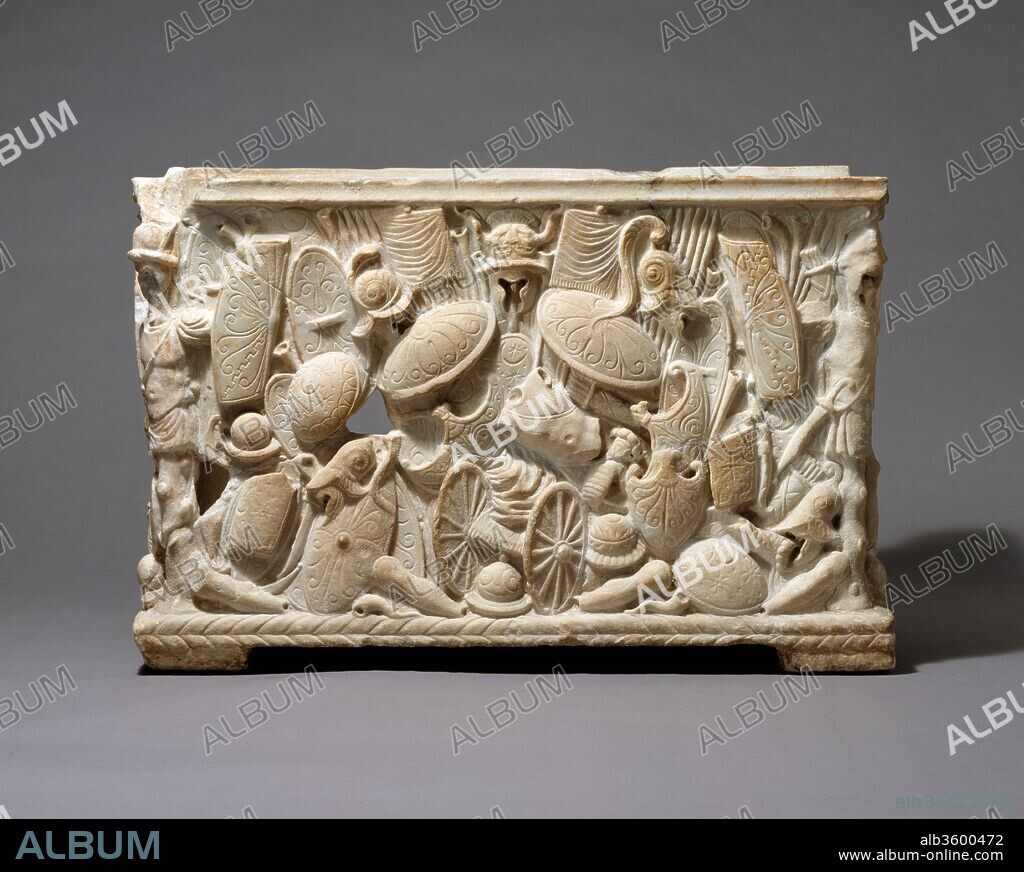alb3600472
Marble cinerary urn

|
Add to another lightbox |
|
Add to another lightbox |



Buy this image.
Select the use:

Title:
Marble cinerary urn
Caption:
Marble cinerary urn. Culture: Roman. Dimensions: Overall: 14 1/4 x 21 1/4 x 16 1/8 in. (36.2 x 54 x 41 cm). Date: 1st half of 1st century A.D..
This Roman cinerary urn is highly unusual in having the spoils of war as its principal theme. Despite the fragmentary nature of the piece, the trophies and piles of weapons and armor that cover the back and sides of the rectilinear box are very striking. In both detail and composition, the panels are representative of high-quality workmanship, suggesting that the work was a special commission. Sadly, much of the front, where the inscription recording the name of the deceased would have been, is missing. The urn is said to have been excavated from a tomb near Anagni, southeast of Rome, in 1899.
Other marble funerary urns in the Museum's collection (see 96.9.222a, b; 25.78.29; and 27.122.2a, b; on display in the courtyard) belong to much more common types of Roman funerary art, cinerary urns that either resemble actual receptacles (vases or baskets) or are in the form of altars or miniature buildings. In both iconography and craftsmanship, the present urn foreshadows the elaborate sarcophagi of the Mid-Imperial period.
Technique/material:
Marble
Period:
Early Imperial, Julio-Claudian
Museum:
Metropolitan Museum of Art, New York, USA
Location:
ROMAN EMPIRE
Credit:
Album / Metropolitan Museum of Art, NY
Releases:
Model: No - Property: No
Rights questions?
Rights questions?
Image size:
4200 x 3360 px | 40.4 MB
Print size:
35.6 x 28.4 cm | 14.0 x 11.2 in (300 dpi)
Keywords:
 Pinterest
Pinterest Twitter
Twitter Facebook
Facebook Copy link
Copy link Email
Email
